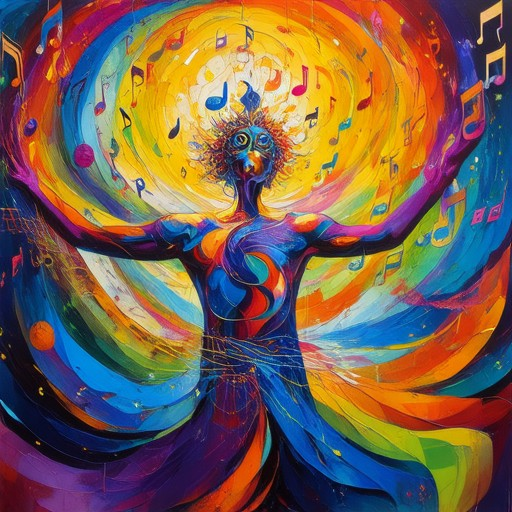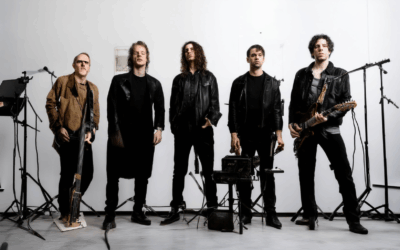Designing band posters can elevate your music promotion efforts, turning a simple piece of paper into a powerful visual statement that captivates audiences and conveys your band’s unique essence. Whether you’re planning a gig, a festival performance, or a special event, a well-crafted band poster serves as more than just advertising—it becomes a memorable experience for fans and a cherished keepsake for years to come. From capturing the energy of your live performances to reflecting your band’s personality, the right design can make all the difference. Explore some practical tips and tools to create band posters that not only stand out but also resonate deeply with your target audience. With the right approach, your band poster can become a cornerstone of your branding efforts, helping you connect with new listeners and build a loyal fanbase.

How to Design a Poster for a Band
To create an effective and visually appealing band poster, follow these steps:
- Choose the Right Size: Posters typically come in standard sizes like 18×24 inches or A4 sheets. Ensure the design is scalable for various formats.
- Opt for Bold Colors: Use vibrant, contrasting colors to grab attention. Dark backgrounds often make colors pop, while light backgrounds allow for text readability.
- Central Band Image: Place a high-quality image of the band in the center. Include all members or key figures to make the poster recognizable.
- Simplify the Background: Keep the background simple to avoid overshadowing the band image. Consider gradients or textures that complement the overall theme.
- Distinctive Typography: Use a large, bold font for the band name. Choose a color that contrasts well with the background to ensure readability from a distance.
- Incorporate Energy Elements: Add dynamic imagery, musical notes, or stage lights to convey energy and excitement. Symbols like lightning bolts or stars can add a festive touch.
- Include Key Information: Add dates, venues, and ticket details prominently. Place these in the corner or along the bottom edge for optimal visibility without cluttering the design.
- Utilize Design Tools: Consider using graphic design software like Adobe Express, Canva, or free tools like GIMP. These platforms offer templates tailored for event posters.
- Reflect the Band’s Vibe: Tailor the design to match the band’s style—classic rock might favor a retro look, while metal bands may prefer edgy elements.
- Budget-Friendly Options: Many design tools offer free versions for basic use. Invest in premium features only if needed for advanced editing capabilities.
- Seek Feedback: Share the draft with friends or colleagues for constructive criticism. Their insights can refine the design and ensure it resonates with the target audience.
By focusing on these elements, you can create a visually striking and functional band poster that effectively communicates your event details while captivating your audience.
Are Band Posters Worth Anything?
Band posters can indeed hold significant value, particularly if they are rare, in high demand, or from iconic performances. The value of old rock posters often depends on several factors:
- Rarity: Posters from legendary bands or historic concerts are highly sought after. For instance, a 1969 Led Zeppelin poster recently sold for over $23,000 at auction.
- Condition: Posters in excellent condition tend to command higher prices. Damage or fading can significantly reduce their value.
- Artist Popularity: Posters featuring well-known acts like The Beatles, Rolling Stones, or Pink Floyd are generally more valuable due to higher demand.
- Event Significance: Posters from famous festivals like Woodstock or iconic venues like Fillmore East are highly collectible.
- Historical Context: Posters from significant cultural moments, such as the rise of punk rock in the late 1970s, can be particularly valuable.
To determine the value of your band posters, consider consulting grading services or experts who specialize in music memorabilia. Proper storage and preservation are crucial to maintaining your posters’ value over time. Keep them in a clean, dry environment away from light and humidity.
For more information on caring for concert posters and understanding their historical impact, explore our guide to poster preservation and dive into the rich history of rock music with our timeline of significant events .

What Size Are Band Posters Usually?
Band posters typically come in standard sizes that cater to various promotional needs. The most common sizes for band posters include:
- 11″ x 17″ – This is a widely used size for promotional materials, offering a balance between visibility and portability.
- 24″ x 36″ – Larger sizes like these are often used for high-impact promotions, such as concert posters or event advertisements.
These sizes are particularly popular for wheatpaste posters, which are commonly seen on public walls and fences. The choice of size can vary based on the event type, budget, and intended audience reach.

How to Effectively Design a Poster
To create an impactful poster, follow these essential steps:
- Define Your Message: Clearly outline the purpose of your poster. Whether it’s for a concert, promotional event, or informational campaign, ensure your core message is communicated effectively.
- Choose the Right Font and Size: Select a font that’s easy to read from a distance. Sans-serif fonts like Arial or Helvetica are ideal for posters due to their simplicity and legibility.
- Optimize Color Scheme: Use contrasting colors to ensure text stands out. Stick to a limited palette—black, white, and one or two bright accent colors—to maintain visual impact without overwhelming the viewer.
- Consider Background: Keep the background simple, either a solid color or a subtle pattern that complements your text and imagery without distracting from the message.
- Establish Visual Hierarchy: Use headers, subheaders, and typography to guide the viewer’s eye. Larger text and contrasting colors for headers will help establish importance and hierarchy.
- Incorporate Imagery Thoughtfully: Add high-quality images or graphics that reinforce your message. Ensure they are relevant and visually appealing without overshadowing the text.
- Plan Layout and Spacing: Create a balanced layout with adequate white space. Allow enough breathing room between elements to enhance readability and visual appeal.
- Tailor for Your Audience: Adjust the design based on who will view it. Vibrant colors and bold designs suit younger audiences, while muted tones may be more appropriate for professional settings.
- Consider Materials: If printing, select the right paper stock and ink to ensure the poster looks sharp in both digital and printed formats.
- Test and Refine: Display the poster in various settings to assess its effectiveness. Gather feedback to identify areas for improvement and ensure optimal visibility under different conditions.
By thoughtfully applying these principles, you can create a poster that effectively communicates your message and captivates your audience.
General Rule for Poster Layout Design
The general rule for effective poster layout design revolves around creating a visually appealing and readable structure that grabs attention while conveying the intended message. Here are the key principles:
Typography and Readability
- Font Selection : Choose fonts that are easy to read from a distance. Sans-serif fonts like Arial or Helvetica are often recommended for posters due to their clarity.
- Size Proportionality : Ensure text size is proportional to the poster dimensions, avoiding small text that may be hard to read.
- Contrast : Use contrasting colors for text and background to enhance visibility. White text on a dark background is a common and effective choice.
Hierarchy and Spacing
- Headings : Place primary headings at the top of the poster to capture attention immediately. Subheadings can be used to organize content into logical sections.
- Column Breakdown : Divide the poster into columns to manage content effectively. Align the tops of the columns to create a cohesive look.
- Justification : Left-justify text within each column to prevent overcrowding and maintain readability.
Visual Elements
- Imagery : Incorporate high-quality images or graphics that complement the theme. Ensure visuals are centered and do not overpower text.
- Color Palette : Use a limited color palette to avoid overwhelming the viewer. Consistency in color usage helps reinforce brand identity.
- Negative Space : Utilize negative space strategically to highlight key elements or create visual interest without cluttering the design.
Actionable Tips
- Limit Text : Avoid overloading the poster with text. Prioritize essential information and use visuals to supplement written content.
- Alignment : Keep headings, columns, and graphics aligned to create a polished appearance.
- White Space : Don’t fear white space. It allows the eye to rest and makes the design more breathable.
By adhering to these principles, you can create a poster layout that is both visually engaging and functionally effective in communicating your message.

What Are the Three Layers of a Good Poster Design?
A good poster design is built on three distinct layers, each serving a unique purpose in capturing attention, communicating ideas, and leaving a lasting impression. These layers work together to create a cohesive and impactful visual experience:
- Primary Layer: Central Message or Theme
The foundation of any effective poster design lies in its central idea or theme. This layer determines the overall direction of the design and ensures that the core message is clear and consistent. Whether it’s a campaign slogan, a product launch announcement, or a call-to-action, the primary layer sets the tone for the rest of the design. Without a strong central theme, the poster risks feeling disjointed and lacking focus. - Secondary Layer: Key Visual Elements
This layer includes the most prominent graphical elements that reinforce the primary message. It could be bold headlines, striking imagery, or iconic symbols. These elements are strategically placed to draw attention and guide the viewer’s eye toward the most important parts of the design. For example, a large, arresting image or a catchy headline often forms the backbone of the poster’s appeal. - Tertiary Layer: Supporting Details
The final layer consists of supplementary elements that enhance the overall design without overshadowing the primary message. This could include color palettes, typography choices, grids, and spacing that create a harmonious balance. Subtle details like background textures or accent graphics can add depth and interest while maintaining consistency with the central theme.
By carefully balancing these three layers, a poster design becomes more than just a static image—it becomes a powerful tool for communication and engagement, whether it’s for a marketing campaign, promotional event, or artistic expression.



0 Comments